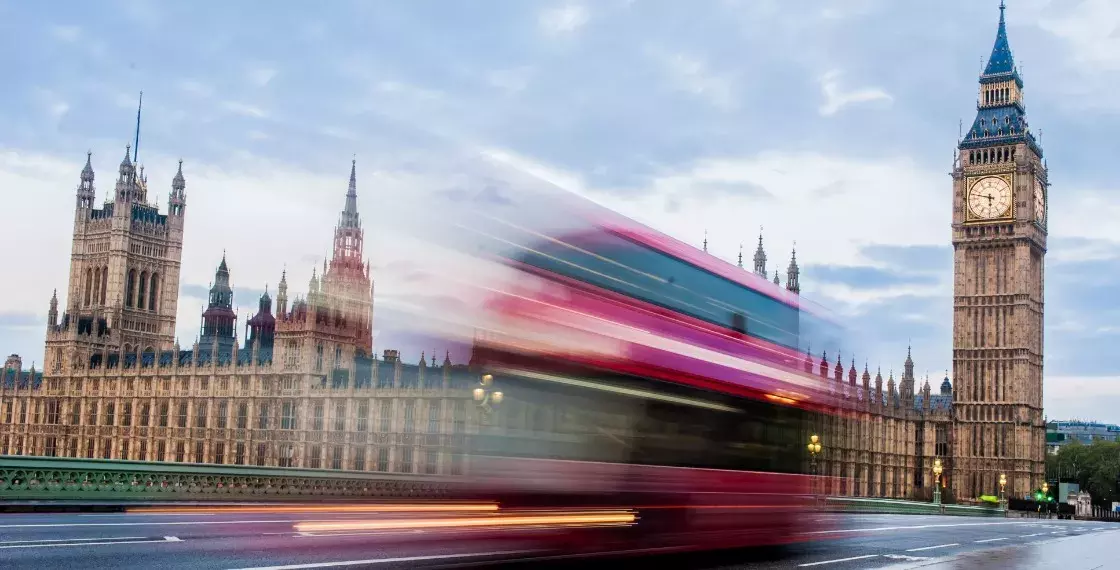Governments all over the world are facing disruption on an exponential scale due to technological and climate change as well as powerful social and economic forces.
The good news for them is that they, too, can become exponential and ride this wave of change to deliver transformative innovation for their citizens.
The Covid-19 crisis has driven change at a breathtaking pace during the last 12 months. No sector or organisation has been left untouched, and the government is having to deal with extraordinary levels of economic, social and technological disruption as the UK grapples with new challenges, behavioural shifts and new ways of working.
Civil servants and politicians might be forgiven for wanting to stop to catch their breath. But there’s little chance of this rate of change slowing down. That’s because the elements have assembled for a perfect storm of disruptive change that’s ongoing, unfolding in many different areas and accelerating increasingly rapidly.
We’re seeing a wave of innovation from the private sector in response to the present social and economic crisis, just as we have before. Airbnb and Uber started during the 2008–09 financial crash. Microsoft and Dell were created during the oil crisis of the 1970s, and Disney was built during the Great Depression. And there’s no question that the Coronavirus pandemic will see new unicorns emerging. How can the government innovate like these start-ups?
One thing that innovative start-ups are good at is making rapid decisions and being flexible in response to changes in their environment. The pandemic has shown that government can do this too – as demonstrated by the many examples of innovation in response to the enormous surge in demand for health services.
We’ve seen the NHS adopting digital technology at an astonishing pace. In December 2019, NHS Digital reported that just 15% of 24m primary care appointments during the month had taken place by phone or online. By April 2020, 49% of 18m appointments during the month were by phone or online.
Some NHS trusts are using a digital care assistant, which has an optical sensor that keeps track of a person’s movement, pulse and respiration, to monitor Covid-19 patients’ vital signs when they’re isolated in their rooms. This reduces the need for healthcare professionals to enter the room.
Dr Tim Baker, Specialist Registrar at Addenbrooke’s Hospital in Cambridge, has developed an app for patients who can’t communicate because they’re on ventilators and are too weak to write or gesture. They can tap on specially designed icons to tell clinicians anything from where they’re feeling pain to whether they have a dry mouth. This reduces their frustration and misunderstandings with clinicians. In turn, it helps with more effective treatments and recovery.
And so, we have plenty of evidence that this crisis, like those before it, is driving innovation, that the pace of change is not going to let up anytime soon, and that government can be at the forefront of innovation that makes a real difference in citizens’ lives. The question then becomes: what should its leaders do to enable and nurture innovation?
Firstly, it should be very deliberate about the way that it organises itself and makes decisions to support innovation. Becoming exponential isn’t just about technology. It’s also in the way we organise — or disorganise — ourselves for innovation. Innovation isn’t a side-line activity and it can’t be confined to a programme. The entire organisation needs to be set up to foster innovation.
Again, the private sector is leading the way in this. Steve Jobs, for example, built Pixar Studios and the new Apple campus to ensure that teams that may never normally meet are constantly crossing paths — hoping that these random encounters might spark new ideas. Of course, this doesn’t guarantee innovation, but government should consider how it can organise itself — in terms of organisational structures, hierarchies of control and physical environments — to maximise opportunities for collaboration and creativity.
The second step is to embrace a new role for technology, which has the potential to change every government service. New commercial models for technology innovation, where infrastructure, software and even entire services or functions are provided as a service, mean that government no longer has to build technology solutions itself, or even buy them. These new commercial models and the falling price of hardware mean that government departments don’t need huge investments to set themselves up to run efficiently and manage interactions with citizens effectively. And it also means they can get up and running more quickly with new technologies.
Next there is the sheer volume of data and information that’s now freely available at our fingertips through both public- and private-sector organisations. The convergence and availability of cutting-edge technology and data creates opportunities for government to completely re-imagine how it provides services. And this is all happening at an incredible pace, accelerated by the Coronavirus pandemic.
And so, as government gets used to the idea that the current pace of change is not going to slow down once we have Covid-19 under control, it should focus on building capabilities in these three areas that power innovation: structures that foster creativity and collaboration, approaches to technology that unleash rapid transformation, and taking advantage of the wealth of data that’s available.







